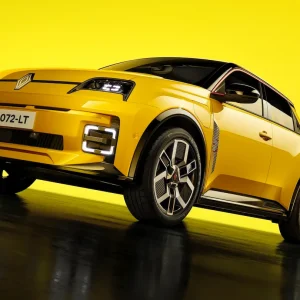By following a meticulous programme of weight reduction across all car components, Mazda is proving there’s life still in the internal combustion engine, writes Jim McGill
While the bulk of the world’s leading car manufacturers are turning more towards the development of hybrids and electric vehicles, Mazda is bucking the current trend in automotive development by utilising the inherent strengths of the internal combustion engine and pioneering its own new technology, SkyActiv.
Mazda in the UK believes the new developments will help propel fleet sales, although the technology will not make its first public appearance here until the new CX-5 arrives in around 10 months.
But what is SkyActiv? At its core is reducing drive friction and the target of shedding of 100kg in weight from each car to achieve better fuel economy and lower emissions than today’s hybrids. Where Mazda differs from other manufacturers is that its search for weight reduction encompasses everything “from the ground up”, in the words of the company’s UK managing director, Jeremy Thomson, such as the engine, transmission, and the platform, including the body and the chassis. And Mazda aims to achieve all this without SkyActiv becoming an eco range at a price premium.
Certainly, having driven the two development mules (based on the existing 6) on a test track, it appears Mazda is poised to reaffirm the internal combustion engine has a long future ahead of it.
BusinessCar drove the new 2.0-litre petrol and 2.2-litre diesel engines, with a choice of new six-speed manual or automatic transmissions. Without question the diesel is the best yet, and it is unerringly petrol-like in its responsiveness and willingness to rev freely. Expect fuel economy around 60mpg and a 20% drop in current CO2 emissions over the existing engines in full production mode.
The petrol engine took on some of the characteristics of a diesel with plenty of low-down torque – 15% more than the current engine.
Combined with the revised suspension layouts and lighter components, it’s clear Mazda has all the ingredients for a car that is both fun to drive and economical.
“The origin of the concept was our MX-5, and our fun-to-drive ‘Zoom-Zoom’ philosophy,” says Kiyoshi Fujiwara, the man in charge of the SkyActiv development, explaining the background to the technology. “The MX-5 is a simple car so we have taken a lot of simple steps and then put them all together. Simple is best because it is reliable and affordable.
“Our new SkyActiv generation of cars will not only make you smile when you drive them, but they will be at least 20% more fuel efficient and be 20% cleaner in terms of CO2 emissions.”
Mazda has already launched its first car with SkyActiv in Japan. The Mazda2 – named Demio in Japan – has a 1.3-litre SkyActiv petrol engine. In conjunction with stop/start, it achieves around 85mpg under Japan’s 10-15 mode test cycle; that’s about the same as the Honda Fit (Jazz) hybrid.
Next year’s compact SUV, the CX-5 – based on the Minagi concept shown at the Geneva show and which will be unveiled in production form at Frankfurt in September – will be the first in Europe with SkyActiv. The technology will then be rolled out across the rest of range, with the Mazda 6 and 3 following quickly.
Raising fleet profile
Mazda UK’s fleet & remarketing director Steve Jelliss believes the new technology will make the cars more attractive to fleet users in the UK.
“Without question SkyActiv is going to raise our profile further in terms of fleet,” Jelliss explains. “We’ve got a deeply compelling proposition now in terms of the fleet market; and SkyActiv, in conjunction with Business Line [a fleet-friendly trim level], which we’ve just announced, will see us take another big step forward.
“This is a whole new approach to motoring, and its benefits will definitely be felt in the fleet sector. We’re looking at as much as a 20% improvement in terms of operational cost-savings to the business user.
“As SkyActiv becomes more available and mainstream within the Mazda product range, I think overall our market share will increase and that fleet will be carried along with it,” Jelliss continues, “so our penetration into the fleet sector will also increase.”





